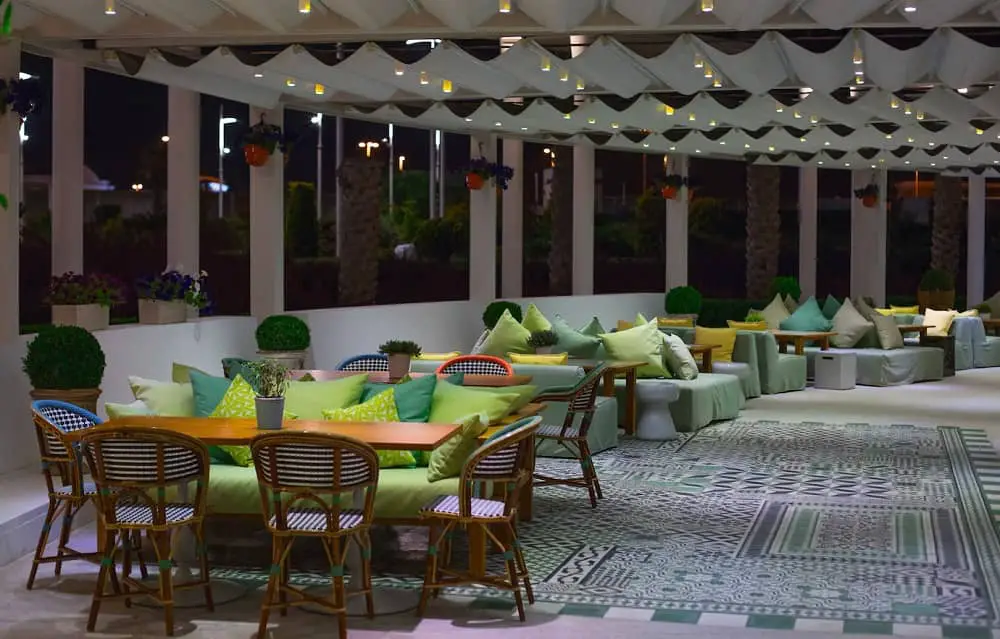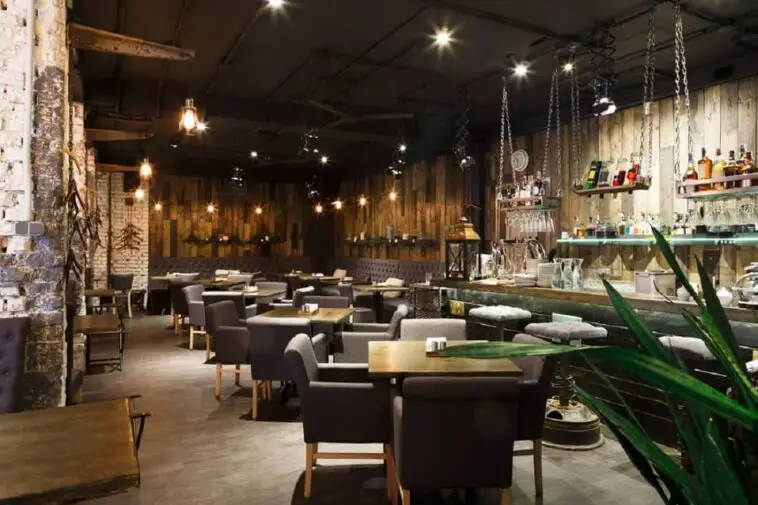When you step into a restaurant, it’s not just the aroma of sizzling dishes or the promise of delectable flavors that draws you in. It’s an entire experience that begins the moment you cross the threshold, encompassing everything from the lighting to the décor to the warmth of the greeting you receive. Amidst these elements, restaurant furniture plays a pivotal role in shaping the psychology of customers and curating their seating experience.
Various pieces of furniture are designed and arranged in a restaurant in such a way that surely impacts mood, social interactions and the perceived taste of culinary delights. So, if you are a restaurant owner seeking to enhance customer satisfaction, this article about how comfortable restaurant chairs and other furniture impact customer psychology and the dining experience will be helpful.
Without further ado, let’s start the discussion.
The Psychological Impact of Comfort on Customer
The psychological impact of comfort on restaurant customers is profound. A comfortable environment, through its cozy ambiance, soothing lighting, and comfortable seating, triggers positive emotions and relaxation. This reduces the stress and anxiety of customers. It also promotes social interactions and prolongs their stay. As a result, customers’ overall dining experience gets enhanced. The perception of comfort also positively influences their evaluation of food quality and service. They feel satisfied, which leads to the likelihood of return visits and positive word-of-mouth recommendations. Ultimately, a comfortable setting cultivates a sense of well-being. It makes customers more inclined to enjoy their meals and associate positive emotions with the restaurant.
Components of Cozy Restaurant Furniture
Cozy restaurant furniture typically includes the following components:
1. Seating: Soft, cushioned chairs and booths upholstered in warm and inviting fabrics contribute to a cozy atmosphere. Deep seats with plush cushions enhance comfort.
2. Tables: Wooden or rustic tables with a tactile surface can evoke a warm and comforting feel. Smaller, intimate tables can encourage a sense of coziness.
3. Lighting: Soft, ambient lighting fixtures such as pendant lights, chandeliers, or even candles create a warm and inviting atmosphere.
4. Textures: Incorporating various textures like wood, fabric, and elements like exposed brick or stone walls adds depth and warmth to the restaurant’s interior.
5. Colors: Earthy tones, warm neutrals, and deep, rich colors contribute to a cozy environment. These colors evoke feelings of comfort and relaxation.
6. Decor: Elements like throw pillows, blankets, drapes, and wall art with a focus on natural materials, rustic designs, or vintage aesthetics enhance the overall coziness.
7. Dividers and Screens: Partition walls, screens, or curtains can create intimate spaces within the restaurant. This enhances the feeling of privacy and comfort. This also needs to be applied to restrooms, where plastic partitions can enhance privacy without sacrificing the cohesive style of the space.
8. Flooring: Soft, plush carpets or natural materials like hardwood flooring with rugs can contribute to a comfortable and inviting atmosphere.
9. Fireplace: If feasible, a fireplace or faux fireplace can be a central focal point. It emits warmth and a sense of homeliness.
The combination of these elements, tailored to the restaurant’s theme and target audience, contributes to an overall cozy and inviting dining experience.
The Importance of Comfort for Satisfying and Loyal Customers
Comfort plays a pivotal role in satisfying and cultivating loyal customers in restaurants. A comfortable dining environment directly impacts the overall dining experience. It contributes to customer satisfaction and repeat business. Here’s why comfort is crucial:
- Enhanced Experience: A cozy and comfortable atmosphere promotes relaxation and reduces stress. Customers can fully focus on their meals and conversations. This leads to a more enjoyable dining experience.
- Positive Emotions: Comfortable settings trigger positive emotions and a sense of well-being. This emotional connection increases customer happiness and leaves a lasting impression.
- Extended Stays: Comfort encourages customers to linger, leading to longer visits and increased spending. This provides restaurants with more opportunities to serve and engage customers, boosting revenue.
- Perceived Quality: Comfort is often associated with quality. A comfortable restaurant environment positively influences customers’ perception of food and service quality. Consequently, it enhances their overall impression.
- Social Interaction: Comfortable seating arrangements foster social interactions. These make customers more likely to dine with friends and family. This communal experience encourages return visits.
- Memorability: Comfortable experiences at restaurants are more memorable. Customers are more inclined to recall positive feelings associated with a restaurant, leading to word-of-mouth recommendations.
- Customer Loyalty: Consistently comfortable experiences build loyalty. Satisfied customers are more likely to return and become regular patrons, reducing customer turnover.
- Online Reviews: Positive experiences related to comfort are often mentioned in online reviews. Higher ratings and positive comments attract new customers and reinforce loyalty.
- Differentiation: In a competitive market, comfort sets a restaurant apart. It becomes a unique selling point. This can attract a niche audience seeking a comfortable and welcoming ambiance.
- Brand Image: A restaurant that prioritizes comfort demonstrates a commitment to customer well-being. This fosters a positive brand image that resonates with customers.

In short, comfort is more than just physical convenience; it’s a psychological and emotional driver of customer satisfaction and loyalty. Restaurants with comfortable, inviting environment can gain not only in terms of customer retention but also in their reputation, profitability, and long-term success.
The Influence of Technology on Creating Cozy Furniture for Restaurants
With technology, you can improve the comfort level and convenience of your restaurant furniture. Advanced materials, like memory foam and temperature-regulating fabrics, allow for comfortable and inviting seating. Virtual reality (VR) and computer-aided design (CAD) can simulate customer experiences, ensuring optimal comfort and layout. Smart furniture integrates features like adjustable lighting and built-in charging stations. This way, you can enhance coziness while catering to modern needs. You can choose online platforms to streamline the design process easily. By embracing technology, you can craft furniture that harmonizes aesthetics and comfort in your restaurant. It will foster a unique ambiance that resonates with patrons and contributes to memorable dining experiences.
Future Trends in Cozy Restaurant Furniture
Future trends in cozy restaurant furniture are likely to focus on sustainable materials, modular designs, and technology integration. Eco-friendly materials like reclaimed wood and recyclable fabrics will be popular. Modular furniture will offer adaptable layouts for various group sizes. Technology integration might include wireless charging stations and smart furniture with adjustable lighting and seating. Customization will rise, allowing restaurants to create unique cozy atmospheres. A blend of modern aesthetics with vintage or cultural influences will emerge. Overall, the future of cozy restaurant furniture will prioritize comfort, versatility, sustainability, and seamless integration of technology.
The Psychology of Comfortable Seating Arrangements
Comfortable seating arrangements in a restaurant play a crucial role in enhancing the overall dining experience. Psychologically, well-designed comfortable restaurant chairs promote relaxation, encourage longer stays, and foster positive social interactions. Place cozy booths, spacious tables, and ergonomic restaurant dining chairs strategically to create an inviting atmosphere. This leads to increased customer satisfaction, repeat visits, and positive word-of-mouth recommendations. As a result, your revenue gets boosted. By understanding the psychology of comfort, you can create an environment that encourages patrons to linger, enjoy their meals, and forge lasting connections, thus yielding significant business advantages.
Final thoughts
Restaurant furniture plays a pivotal role in shaping customer psychology and enhancing the overall dining experience. From influencing comfort levels to promoting social interactions, each piece of furniture communicates a unique message to patrons. Understanding these dynamics is important. It empowers restaurateurs to curate spaces that resonate with their target audience. Ultimately, they can increase customer satisfaction, gain trust, improve brand reputation and boost business.




